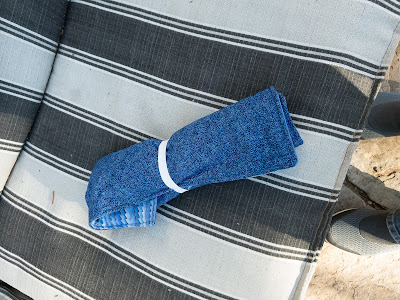Time has usurped my sewing options. I had a wonderful week with a daughter and two of her adult children. One was to be Assistant Director at a local camp. Sadly, camp was cancelled the day before she was to report. The rest of the family had departed so she is now spending a mountain summer here in my sewing room. However, that could never stop a lifetime sew-er like me. I just moved on to a different part of my quilt. I still need to do some fusing and quilting before I am ready to bind, but it is never too early to start making Prairie Points for the binding.
I have never done Prairie Points. I have never done a faced binding. I never worry about doing something new. The exciting part is that I have decided to design my own off-beat points and they require a great deal more time to make than the common ones. I just got the idea and was off and running. I started with some measuring and manipulated paper until I had patterns that I could transfer to card-weight manila folder. I love using manila folders for templates because I have a huge supply after digitizing a lot of paper. They work great and don't have to last forever anyway. Less plastic in the landfill!
Example of an idea.
This is my plan. I will be using 4 colors alternately in the black points. The binding will be orange like the temporary strip in the photo. I will explain how I am making the black points today. I will address the construction of the turquoise point in another post. My finished black points will be 1.25 inches tall above the binding and the point is a 90º angle.
In the meantime, here is a photo of all the stuff I have been hauling around to make them since my sewing room is not available.
1. Start with a 3 inch square of the main color (black in this case).
2. Fold it in half and iron (no fusible on this piece). Cut the triangular colored insert and iron fusible web to its back. My personal choice is SoftFuse.
3. Now stick a pin in the center of the folded edge of the black fabric. This will be the point of the triangle. Fold the two sides to the center, make sure they line up evenly and that the point at the top is crisp. Press the side folds firmly with your iron.
Look hard to see the folded edges from the point to the bottom of the triangle.
4. Open the side flaps and lay the colored triangle, fusible side down in the center. I trimmed the edges of the triangle a little so they did not add bulk to the side folds. Fuse the colored triangle to the black fabric. Run a 1/2 inch long line of Elmer's Clear Glue along the white lines (in the photo below) on each side.
The fold lines are shown in red.
5. Fold the edges of the black fabric exactly to the center keeping a sharp point on tip. Press with the iron to adhere the glue so the flaps will stay in place when you sew.
6. When folded down properly and stitched there will be no color visible along the center line until you create the peek-a-boo hole (step 7). Using an erasable marker (I used SewLine ceramic marker) mark some guidelines:
a. Seam line 1/4 inch above the bottom (this is seam allowance).
b. Line at top where you want it to close (I used 1/4 inch) and where you will sew one bead.
c. Line somewhere in the center where you want the widest part of the peep hole and where you will
stitch two of the beads.
TIP: Roll a piece of painter's tape and place it on top of your spool of thread or some convenient surface. Stick some of your beads on the tape for easy access.
TIP: I bought the only beading needles I could find and they are quite short. I think longer ones will work better to hide knots within the folds, and when I want to run it within the folds to avoid having to start a new thread. I have ordered longer ones that should work much better....I hope. I also used Superior Bottom Line thread, which is very fine (60 wt). The beads are quite small.
7. The first stiches need to close the center folds at the bottom and top marked lines. Then you can fold back one side of the black fabric at the center line to expose the color below. On this size triangle my fold is a scant 1/8 inch deep at the center mark and tapers to the top and bottom. Stitch down with a hem stitch and attach beads if desired. Repeat for the other side of the peek hole.
Finished triangle with the excess edge of the the peek-a-boo fabric trimmed
away outside of the bottom seam allowance.
Sew some happy seams this week. I wish you fun trying a new project.














































